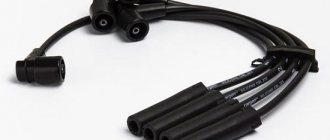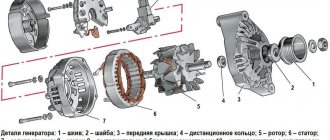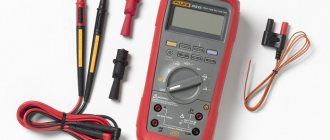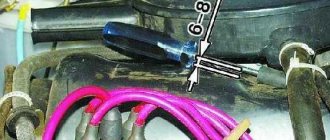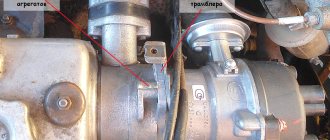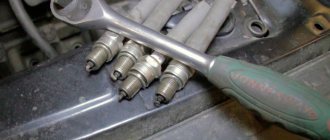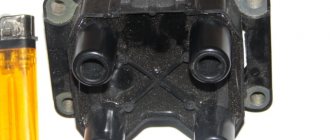How to check armored wires with a multimeter
With the development of technological progress, electrical measuring equipment has appeared, which has become widely used for measuring high current values. The versatility of the measuring equipment lies in the relatively simple automated process providing accurate and fast readings. A multimeter is popular for monitoring resistance in DC wires, cables and cords.
High-voltage wires and their features
Using a measuring device, the amount of electrical voltage can be assessed and compared. By choosing the right type of multimeter, you can examine the armored wire. A feature of high-voltage wires is their ability to withstand the highest current. Intended for installation of networks of radio engineering and electronic equipment with high voltage, they are divided into groups:
- Installation wires.
- Ignition wires.
- Cables of radio-electronic and electrophysical equipment.
- Cables for moving pantographs.
Due to mechanical strength, elasticity with different types of insulation, high-voltage wires are mainly used in the ignition system of engines operating at high voltage, limited switching, pressure and temperature ranges. Despite the resistance to vibration, linear, shock loads, stability, combustion, oils, gasoline, they have limitations and wear.
Diagnostics of the armored wire in the circuit
The advent of digital and analog measuring instruments greatly simplifies and speeds up the process of examining a circuit. Testing of high-voltage wires is based on resistance measurement.
Before starting work, carry out a visual inspection for mechanical damage to the insulation. The interaction of a multimeter with a wire assumes the presence of a signal, which is a carrier of information and is directly related to the magnitude of the current.
Once a violation is detected, the wire is de-energized, removed and connected to a multimeter, which is connected to the gap where the current needs to be measured. The regulator on the device sets the resistance mode.
The measurement range of its indicators depends on the model of the tester. If, when checking on the device, there is no signal information, this indicates that the wire has a break and is unsuitable for further use.
Continuity of high-voltage ignition wires
Modern measuring devices for high currents provide an extension of the measurement limits. So, using a multimeter, you can ring the high voltage ignition wires if they are externally in order. Malfunctions are determined by uneven engine operation.
Before checking the armor wires with a multimeter, you need to find out their resistance. The manufacturer of high-voltage wires and cables took care of this by indicating the resistance of each brand on the insulation.
The procedure for testing is to connect the probes of the measuring device to the ends of the wire. The measurement readings must correspond to the cable markings. An important element of high-voltage wires is insulation.
Today, wires using fluoroplastic material braided with glass fiber yarn are widely used; this gives mechanical strength, elasticity, resistance to action, oil and fuel, designed for a temperature range from 0 to 250 ° C.
Improved high-quality insulation makes the wires wear-resistant.
Basics of selecting measuring devices
Today, new technologies provide particularly advanced technical means for measuring, monitoring accuracy and restoring various elements of electric current.
Without the use of universal measuring mechanical devices - oscilloscopes - it is impossible to carry out a number of diagnostic operations.
Control mechanisms have different shapes and technical characteristics. This allows the consumer to select a device with a current measurement system that is most suitable for the requested parameters.
Considerable importance when purchasing devices is their cost, which depends on the complexity of manufacturing the structural elements.
Requirements for technical control devices
When choosing, it is necessary to take into account the factor of obsolescence, present requirements for the prospects of devices in an accessible and simple form to show the magnitude of voltage and resistance.
When purchasing a device, you must take into account input protection, ease of control, and delivery set. When choosing measuring instruments, it is important to take into account their classification according to the method of presenting information, when the device only reads the measured value or the readings are presented in digital form.
The parameters of the mechanisms are also of considerable importance:
- measurement range (the device is designed for a given value);
- sensitivity threshold (measured value that the device can distinguish);
- accuracy (limits of permissible error, measurement uncertainty);
- stability (the ability to maintain a given accuracy for a certain time).
Models of measuring mechanisms provide testing not only of electrical equipment, wires, cables, but also with their help, the resistance of the ground loop is measured in order to reduce voltage.
How to check armored wires with a multimeter?
The testing principle is based on resistance measurement. It has been established that the difference between the armored wires does not exceed 2-4 kOhm. However, it is worth remembering that each car model has its own resistance value for high voltage wires. If there is no compliance with the standard, then such wires are unsuitable for further use and must be replaced.
We remember that before picking up a multimeter, you should inspect all the wires visually. This is done to detect obvious damage, insulation violations and melting. Measurements are carried out on the removed armored wire. A multimeter probe should be connected to each of its ends. In this case, polarity does not matter when measuring resistance values. On the device itself, you must first select the ohmmeter mode.
High voltage ignition wires: how to check and recognize the symptoms of a malfunction
Many car enthusiasts are accustomed to calling high-voltage ignition wires spark plug wires. The second name more clearly describes their task in a car, which boils down to transmitting electric current from the ignition coil to the spark plugs. From the name you can understand that these wires are different from all the others installed in the car. Their peculiarity is their ability to withstand high voltage passing through them and protect other machine components from it. Every driver should know how to check high-voltage ignition wires, since operating the car in a faulty condition can lead to failure of expensive devices and parts.
Design of high-voltage ignition wires and requirements for them
High-voltage ignition wires are designed quite simply. They consist of a conductive element with a metal tip, two plastic caps and reliable insulation.
The most important element of spark plug wires is the insulation, which performs two functions:
- Does not allow moisture to enter the conductor;
- Minimizes current leakage during transmission.
Metal tips of spark plug wires are necessary to ensure electrical connection between the wire leads and the contacts of the spark plug and ignition coil. It is necessary that the metal attachments:
- They were securely fixed on the wire and firmly connected to the elements on the terminals, thereby preventing the dissipation of transmitted energy;
- They had increased anti-corrosion protection, which is necessary for long-term operation of the wires.
Plastic caps are also an important element of spark plug wires. Their task is to protect the terminals of the ignition coil and spark plugs from the influence of the external environment. Like metal tips, plastic caps should be connected as tightly as possible to other parts in the current transmission circuit.
Based on the information above, it is possible to identify the main list of requirements that apply to high-voltage wires. They have to:
- Cope with assigned conductive tasks;
- Reduce current leakage to zero during its transmission from the ignition coil to the spark plugs;
- Withstand the aggressive environment of the engine compartment;
- Work at different temperatures.
Heat, vibration, aggressive environment - the developers of spark plug wires try to protect them from all this. Insulation works, but it also has its own service life, which cannot be clearly defined. Over time, high voltage wires will become less efficient and will need to be replaced.
How to check high voltage wires on a car?
The high-voltage wires of a gasoline engine carry current to the spark plugs. With a thickness of about 7 mm, the wires must withstand the voltage of 40 kV generated by the high voltage coil. The high voltage wire must have rated resistance and high-quality insulation.
Faulty or broken high-voltage wires conduct electric current worse, the ignition is disrupted and the engine loses power, dynamics deteriorate, and fuel consumption increases. If the insulation is damaged, a spark discharge can jump directly under the hood, which increases the likelihood of a fire.
Therefore, you cannot ignore the problem, but you need to know how to check the ignition wires in order to identify the cause of the problems.
Measuring the resistance of high-voltage wires
The wires are disconnected from the arrester and completely removed from the engine. To do this, use a tester in resistance measurement mode in the range of 20 kOhm. The tester contacts are placed on both sides of the wire and readings are taken.
The resistance on the high voltage wires can vary from 3.5 to 10 kOhm, while the difference in this indicator in one set of engine wires should not exceed 3 kOhm. Otherwise, they must be replaced.
If the wire shows a resistance of more than 10 kOhm, it feeds a defective spark plug or the spark plug had an increased gap. If there is only one faulty element in a high-voltage ignition system, the entire operation of the system is disrupted and the elements fail.
Checking the high-voltage ignition wires with a multimeter is the most reliable way to determine their condition. If the resistance exceeds the standard values for a given wire, it must be replaced.
Checking high-voltage wires using a spark gap
To test high-voltage wires on a car under conditions close to operational conditions, you will need a special spark gap. They are installed on the ignition module and connected to the device. One wire is installed on the arrester with a gap of 14 mm, and the second wire is connected to ground. Using a special device, engine operation is simulated.
The operating mode is set to 2000 rpm, and the spark discharge must be stable and uninterrupted. After this, the wires are swapped and the test is repeated in the same mode. This operation is performed in pairs with all the wires connected to the car’s cylinder spark plugs.
Checking wires for breakdown
Checking for breakdown of explosive wires is carried out using a special device. This is a loop of thick copper wire on a dielectric handle 30-40 cm long. The loop is short-circuited to the ground of the car.
The copper loop is carefully placed over the wire so that it can slide along it. The wires remain connected to the spark gap, which is switched on to simulate engine operation at 2000 rpm. The loop is placed on a wire connected to the spark gap and drawn along its entire length.
If there is a breakdown on the wire, it will be visible by the discharge between the wire and the loop. Be sure to check the quality of the insulation near the spark plug tip and cap connected to the high voltage coil.
Testing insulation for breakdown
Next, the wires are swapped and the test is repeated. If a breakdown is detected in the wire, it must be replaced, even if its resistance meets the standards. If you ignore this point, you can get many problems:
Field test option
You can check the serviceability of high-voltage wires by creating conditions close to real ones. To do this, the engine compartment, including the high-voltage coil and ignition module, is sprayed with “dewdrop,” creating the effect of wet weather. Using a spark gap, the operation of the engine at different speeds is simulated. The discharge must remain stable, without breaks or omissions.
How to check the wiring if there are no obvious signs of damage, but the engine malfunctions
If this method of checking does not live up to expectations, test the wiring with a voltmeter. How to check high-voltage wires on a VAZ 2114?
Checking explosives with a multimeter
Signs of direct damage are easiest to spot after dark. It is necessary to strip the wiring sections from opposite sides and short-circuit one side to the housing or battery. With the other side we move along the plugs, wiring contacts and other conductors. If there is a breakdown, a spark will appear.
The voltmeter is switched to ohmmeter mode. Measure all the wires, sequentially removing them from the cylinders and coils from left to right. Each indicator must be recorded, so prepare paper and pen (pencil) in advance.
How to measure the voltage resistance of VAZ 2114 wires:
- Turn off the car.
- Remove the end of the wire from the cylinder.
- Remove the opposite end from the ignition coil.
- Connect both ends to the multimeter.
- After counting, write down the readings.
- Repeat the sequence for the remaining three wires.
What resistance is considered normal? Depending on the brand of wiring, from 3.4 to 9.8 kOhm. Normal values are usually stuffed on top of the insulation. If the measurement difference does not exceed 2-4 kOhm from the control value, this is within normal limits. Otherwise, the kit must be replaced immediately.
Before replacing, you need to reanimate the oxidized contacts, then ring again. To do this, clean the contacts with WD-40 or carburetor cleaning fluid.
Normal wiring resistance of different brands:
- Tesla - 6 kOhm (in case of fakes it can reach up to 8 kOhm);
- Elephant - 4-7 kOhm;
- Kargen - 0.9 kOhm;
- ProSport tends towards zero.
Even if one wire has become unusable, the entire set must be replaced.
How to check high-voltage wires on a car
Welcome, friends, to the VAZ car repair website. Every driver has experienced a breakdown in their car at some point.
One of the most common malfunctions in the ignition system is the failure of high-voltage wires (HV).
How to check high voltage wires
Of course, this is not a part that, if broken, makes it impossible to get to your destination; everything is a little different here, so let’s look at everything in more detail.
I think everyone knows that the high-voltage wires of a car transmit a spark from the coil or ignition module to the spark plugs.
Possible malfunctions of high-voltage wires:
- Oxidation of contacts.
- Cracks in the insulation of high-voltage wires.
- Broken core inside the wire.
- Poor contact in connections.
All this leads, in simple words, to the supply of a weak spark from the coil or ignition module to the spark plugs, as a result of which the fuel mixture in the cylinder does not ignite or slightly delayed ignition occurs, which is not good.
We can say that these are the main malfunctions that most often occur and can lead to interruptions in engine operation, vibration, loss of power and increased fuel consumption.
How to check high-voltage wires on a car
There are several ways to check explosive wires: visual inspection in a darkened room using a multimeter and, so to speak, the traditional way using an ordinary piece of wire.
We start with the simplest thing, in the evening, when it gets dark, open the hood and start the engine, if you see a spark appearing on the wires, then such wires need to be changed.
The next way to test high voltage wires is using a piece of regular wire, you need to strip both ends of the wire.
We place one end on the metal part of the car (ground), and with the other end we run along the wires along the entire length, including all connections.
If you see a spark, it means there is a breakdown in the wire and it must be replaced; check them in this way in the dark.
Checking the resistance using a multimeter
- First of all, set the multimeter to ohmmeter mode.
- We pull out both ends of the wire from the first cylinder.
- We connect the electrodes of the device to the ends of the explosive wire.
- We check all the wires in this way and look at the readings of the device.
The resistance of serviceable wires will be in the range from three and a half to ten kOhms, but it all depends on the company that produces them.
The permissible spread is from two to four kOhms. If the deviations are greater, then the high-voltage wires will have to be replaced. The wires need to be changed all at once, that is, as a set.
Now let's look at several companies that produce wires and what their resistance is.
Commonly encountered explosive wires:
- Tesla-six kOhm.
- Slon - first four, last seven kOhm.
- ProSport - about zero kOhm.
- Cargen-0.9 kOhm.
The manufacturer writes the resistance mainly on the wire itself, and it depends on the length of the wire, which is why there are such deviations on the first and fourth cylinders. The table provides rounded values.
Wire diagnostics
Let's start with traditional methods of how to check an armored wire.
We determine the breakdown “by eye”
The easiest way to check the wire is to disconnect them from the spark plugs one by one. If you see that there is no change in the engine's performance when disconnected, then the wire in your hand is most likely faulty.
Advice! This procedure should be performed with extreme caution, using a dielectric mat and insulating gloves, as the ignition system pulse can exceed 20,000 Volts. The price of breaking the rule is life or health.
The next method is to connect a known good spark plug to the armored wire and bring it to the car engine housing. If there is no spark, then the wire is faulty.
You can also try to determine the presence of a breakdown in the dark - when you turn off the light, you will notice a spark. But the easiest and most reliable way is to replace the armor wires that you suspect with new ones. The result will be one hundred percent.
Working with a multimeter
If you do not have a working armored wire or you do not want to risk disconnecting the wires, then it is best to ring the armored wire, which will allow you to accurately determine its physical parameters. For work, the simplest Chinese multimeter will be enough, which can be purchased for 300 rubles at a flea market.
Professionals measure two parameters when checking:
- Current-carrying resistance;
- Insulation resistance.
We will have to limit ourselves to the first parameter, since the second requires a megohmmeter, the cost of which does not justify the reluctance to contact an electrician.
The conductor resistance should be from 0 to several kOhms, which directly depends on the type of wires used in the car. Modern cars are equipped with radio receivers, so it is necessary to create some resistance, for which resistors, sliders or varistors are used.
The following materials can be used for wires:
- Nichrome (nickel-chrome alloy);
- Conductive polymers - their resistance is around 15 kOhm;
- Cotton threads that are impregnated with a soot solution - their resistance will be around 20 kOhm;
- Fiberglass with graphite coating.
The wires are checked like this:
- We disconnect the armored wire and place it on the table in front of us;
- Switch the multimeter to resistance measurement mode;
- We touch the tool probes to the opposite contacts of the wire and look at the indicators.
- The final resistance should not exceed 20 kOhm, and in most cases should be 0.5-2 kOhm.
What to do if a breakdown occurs on the road
- If trouble happens on the way, you can get to the parking lot by performing a quick repair of the armored wire. First you need to determine the location of the breakdown using the method already described in the dark.
- Then, using a sharp knife, remove the insulation from this area.
- The break must be connected with any copper conductor using the twisting method. It is desirable that the wire used has a normal cross-section.
- Next, the connection is isolated, but it’s not that simple. Conventional insulating tape is not able to withstand the operating voltage, since its breakdown occurs from 2 to 6 thousand volts, and we need to make insulation with a reserve of 40,000 V.
- By simple calculations we find that at least 6 full turns of electrical tape will be required.
It is best, instead of electrical tape, or in addition to it, to attach some kind of plastic box that will protect the wire from contact with other energy conductors and the car body.
That's all. As you can see, Nikolay, checking armored wires with a multimeter yourself is not such a tricky matter. The instructions are extremely simple, but require some caution.
How to check high-voltage wires on a car
High-voltage wires (armored wires) are used to transmit high current (spark) from the coil or ignition module to the spark plugs. Very often, various types of problems arise in the car’s ignition system precisely because of the failure of high-voltage wires. The level of spark transmission directly depends on their performance, which does not ignite or causes delayed ignition of the fuel mixture inside the cylinder, which negatively affects the performance of engine functions.
The main causes of malfunction of high-voltage wires
The main reasons why engine malfunctions occur, power is lost, vibrations are present and the amount of fuel consumed increases:
- Contact oxidation process.
- Defect, rupture or damage to the conductor carrying the impulse.
- The presence of cracks in the wire insulation, which leads to current leakage.
- Weak or missing contact between connections.
How to check high-voltage wires on a car
Initially, you should make sure that there are no visible defects, such as cracks, fractures, breakdowns, etc. To check explosive wires, use a multimeter or a very ordinary piece of wire.
There are several options that allow you to independently inspect high-voltage wires.
How to quickly check high-voltage wires. 2 ways.
High voltage wires are used to transfer high energy from the ignition coil to the spark plugs.
The voltage that passes through them can reach several tens of kilovolts. Operating at such high voltages, they often fail. At the same time, engine fuel consumption increases, and failure of one or more cylinders may occur. High-voltage wires can have two faults.
1.
The insulation of high-voltage wires must withstand the high voltage that they pass through. If a breakdown occurs in any place, the spark may not reach the spark plug, but may flow to ground. At the same time, the engine may idle normally, but if you open the throttle, it will begin to choke. This happens because when the throttle valve is opened, the pressure in the cylinder increases, this entails an increase in the breakdown voltage, and since the spark always looks for the path with the least resistance, it can go through a broken high-voltage wire to ground. Therefore, when the throttle is opened sharply, a breakdown can manifest itself.
2.
The voltage in the ignition system depends on the resistance in the secondary circuit. As the resistance increases, the voltage also increases. High-voltage wires enter the secondary circuit, and therefore their resistance has a strong influence on the operation of the entire system as a whole.
In order to determine the serviceability
of high-voltage wires, you need to check them in two ways.
Checking the resistance of high-voltage wires with a multimeter.
On the multimeter you need to set the measurement limit to 20 kilovolts.
The resistance of high-voltage wires should be within 5-8 kilo-ohms. It depends on the length of the wire. The longer the length, the higher the resistance. But there are wires with lower resistance, for example 1 kilo-ohm. They are designed to work in a contact ignition system.
Checking wires for breakdown.
In order to make sure that the insulation of the high-voltage wire is not broken, you can make a device as in the photo.
Using it, you can determine the breakdown as follows. You need to secure the wire with a crocodile clip to the engine ground, and put the coil on the high-voltage wire.
Next, you need to start the engine and run a loop along the entire length of the high-voltage wire. If there is a breakdown in any place, a spark will appear and the engine will begin to ignite. High voltage caps can be checked in the same way.
Check high voltage wires
Defective vehicle current-carrying wires (high-voltage) impair engine starting and reduce the operational capabilities of the vehicle. The standard characteristics of the wires are marked on the insulation. The working resistance of high-voltage conductors is considered to be from 4 to 10 units. A discrepancy within 4 kOhm is allowed. The discrepancy between resistance levels is eliminated by a comprehensive replacement of high-voltage electrical equipment.
Checking high voltage wires
A quick way to check resistance without using measuring instruments is as follows:
- first, a visual inspection is carried out;
- Next, take a third-party cable and strip the ends of the insulation;
- then, one is shorted to ground (car body), the second is connected to the switching technological breaks of the high-voltage network;
- the appearance of sparks at the joints indicates a defective material.
The proposed diagnostic method is effective in the dark, when there is no multimeter or other measuring instruments at hand.
How to check high-voltage wires with a multimeter
The operation is not technically difficult: it only requires the presence of a measuring device. The multimeter is placed on a convenient plane.
Companies producing high-voltage wires for cars produce products with different technological indicators.
One thing remains dominant - they necessarily correspond to resistance values from 0 to 10 kilo Ohms.
The verification algorithm is as follows:
- On the multimeter, turn on the resistance measurement function;
- If the device display shows a value higher than the number 10, then the wire is replaced.
Checking the reliability of high-voltage automotive wires is a simple procedure. The car owner does not incur large expenses. Moreover, measuring instruments can be purchased in stores selling spare parts, as well as on specialized trading platforms on the Internet.
